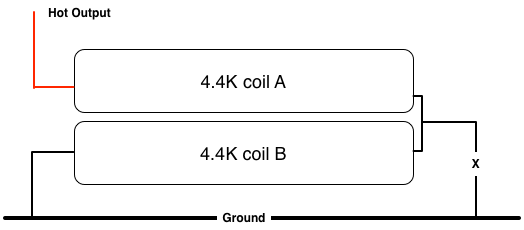JoJo
bird-spotter
- Joined
- Sep 6, 2014
- Messages
- 29
As mentioned some time ago in another DGT-related thread, I did some extensive rework on my DGTs electronics compartment: new pickups, three 500KOhm Push/Pull pots (individual coil splits on the two volumes and an out-of-phase switch on the tone pot).
However, I am not quite sure about the actual wiring of the PRS coil tap, so my experience cannot be transferred directly as I am now using splittable Bare Knuckle Abraxas pickups instead of the stock pups.
To conclude: I used a 100kOhm resistor on the neck coil split and a 200kOhm resistor on the bridge PU split. Initially, I did some trials with an additional cap ranging from 47 to 220p in parallel to the resistor. Finally, I just stuck with the resistor: the caps weren't as dominantly changing the sound and I got the best results (at least to my ears) without using one...
Finally, I would still go with Johan Allard's recommendation: just try different resistor values, if that doesn't the trick, try a cap from 47pF to 1nF switched in parallel to the resistor.
Good luck!
However, I am not quite sure about the actual wiring of the PRS coil tap, so my experience cannot be transferred directly as I am now using splittable Bare Knuckle Abraxas pickups instead of the stock pups.
To conclude: I used a 100kOhm resistor on the neck coil split and a 200kOhm resistor on the bridge PU split. Initially, I did some trials with an additional cap ranging from 47 to 220p in parallel to the resistor. Finally, I just stuck with the resistor: the caps weren't as dominantly changing the sound and I got the best results (at least to my ears) without using one...
Finally, I would still go with Johan Allard's recommendation: just try different resistor values, if that doesn't the trick, try a cap from 47pF to 1nF switched in parallel to the resistor.
Good luck!


